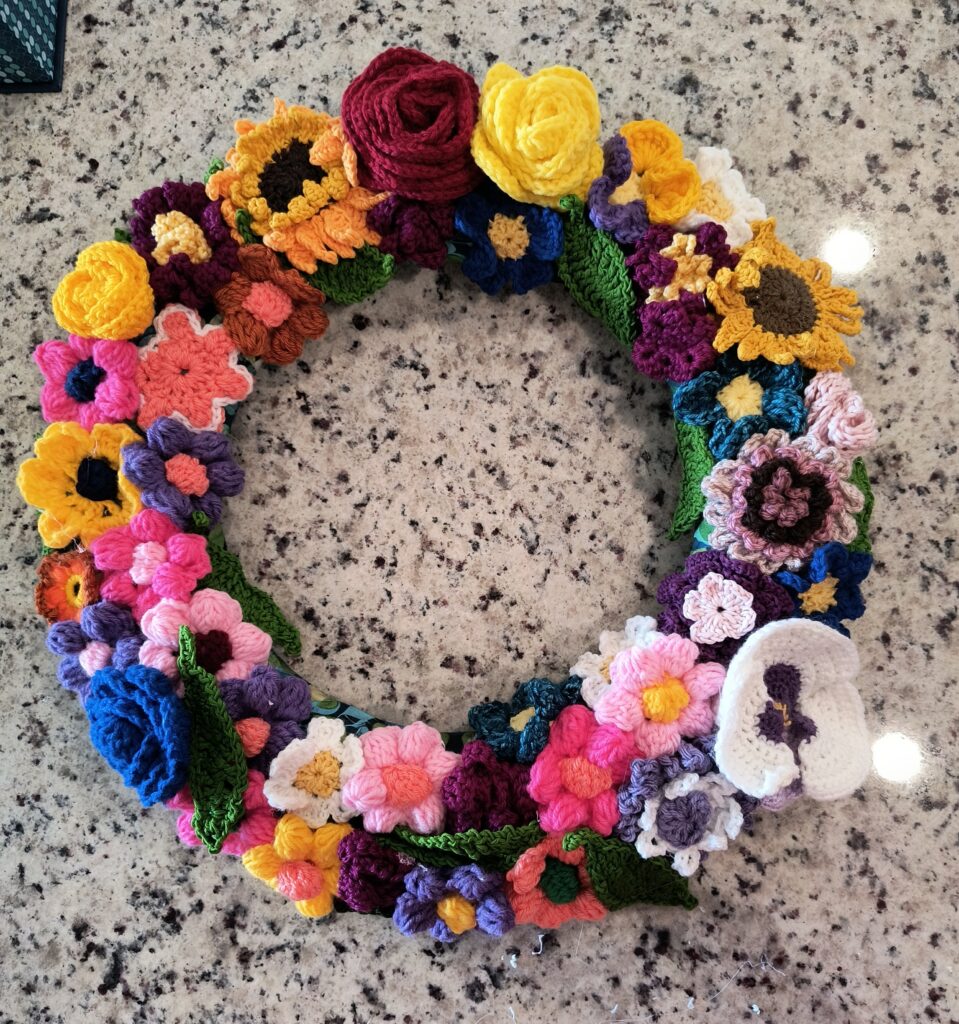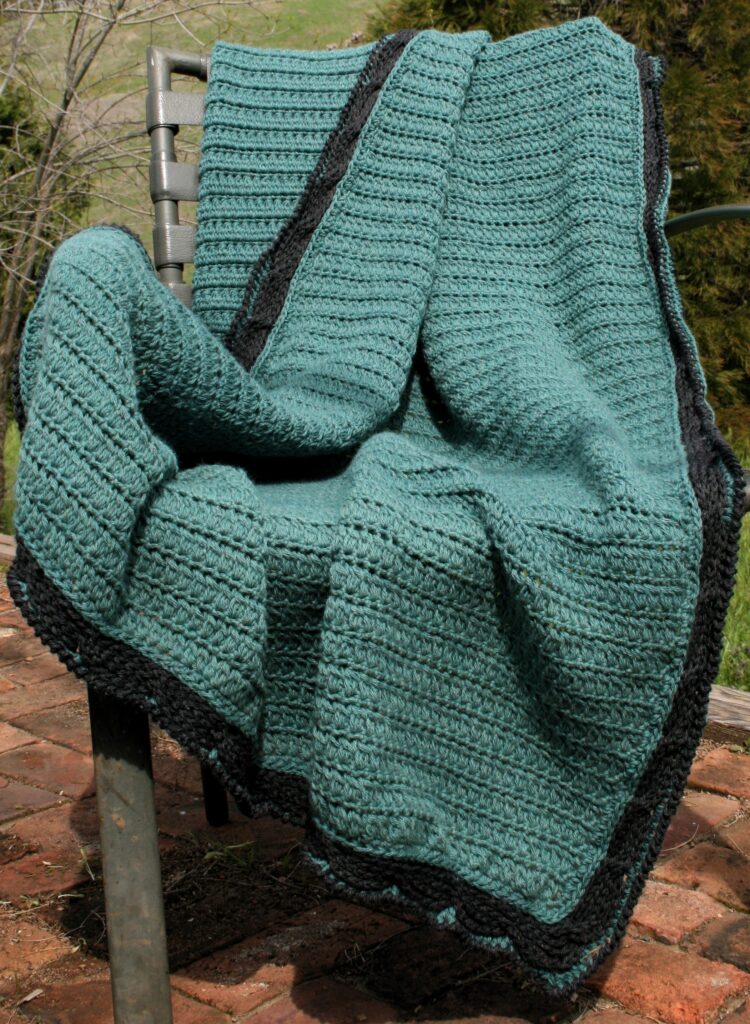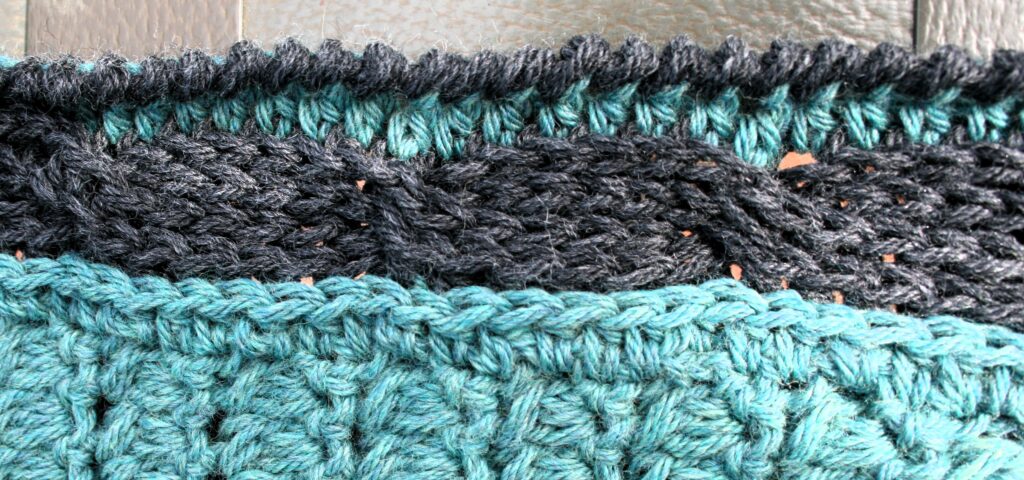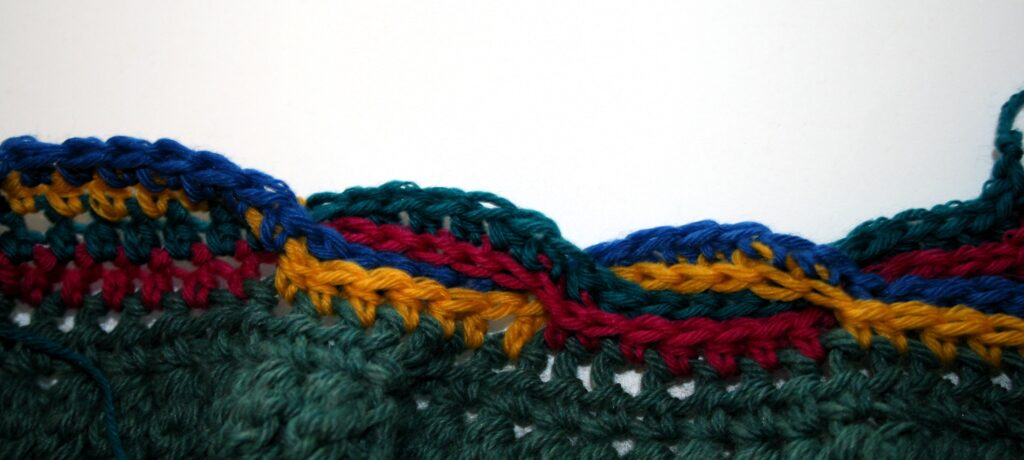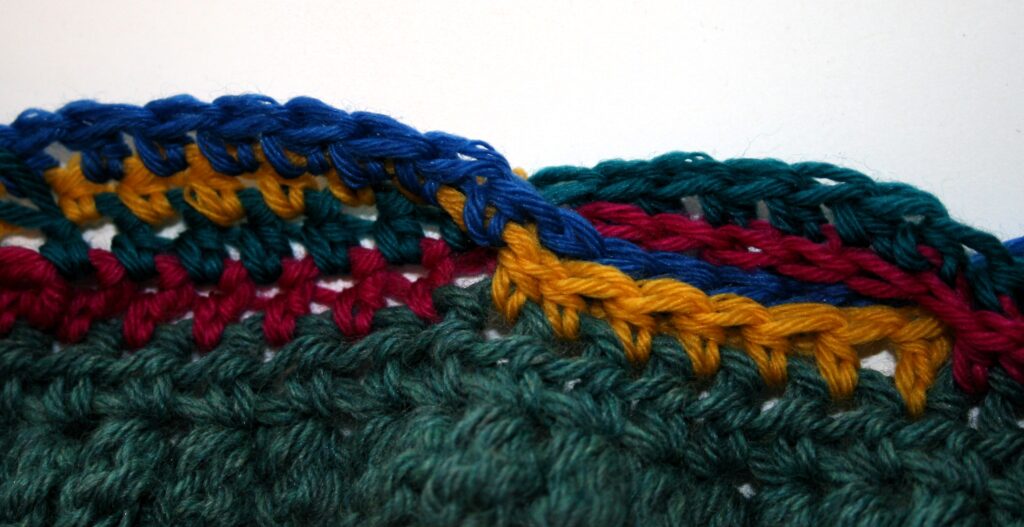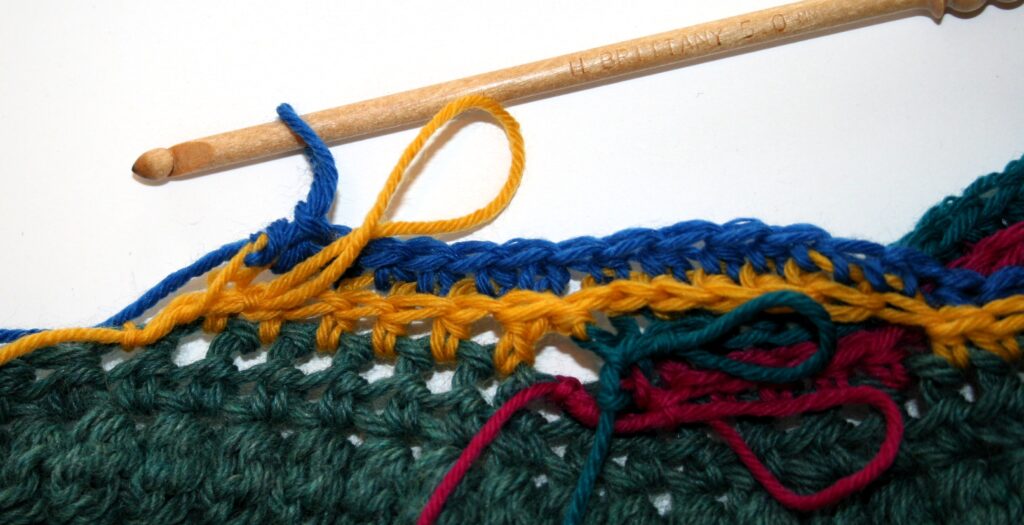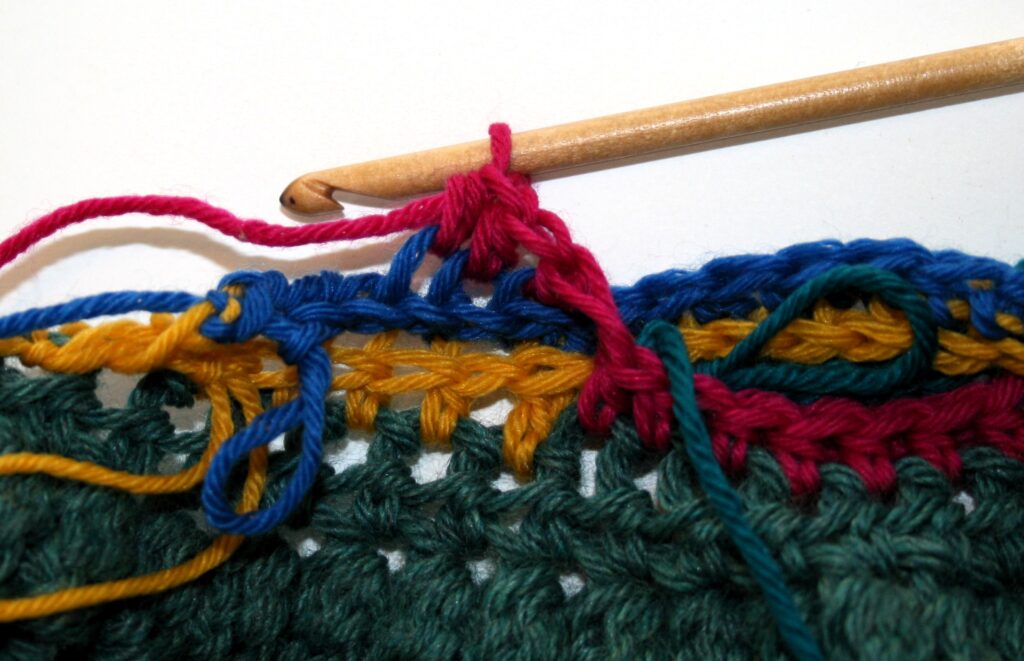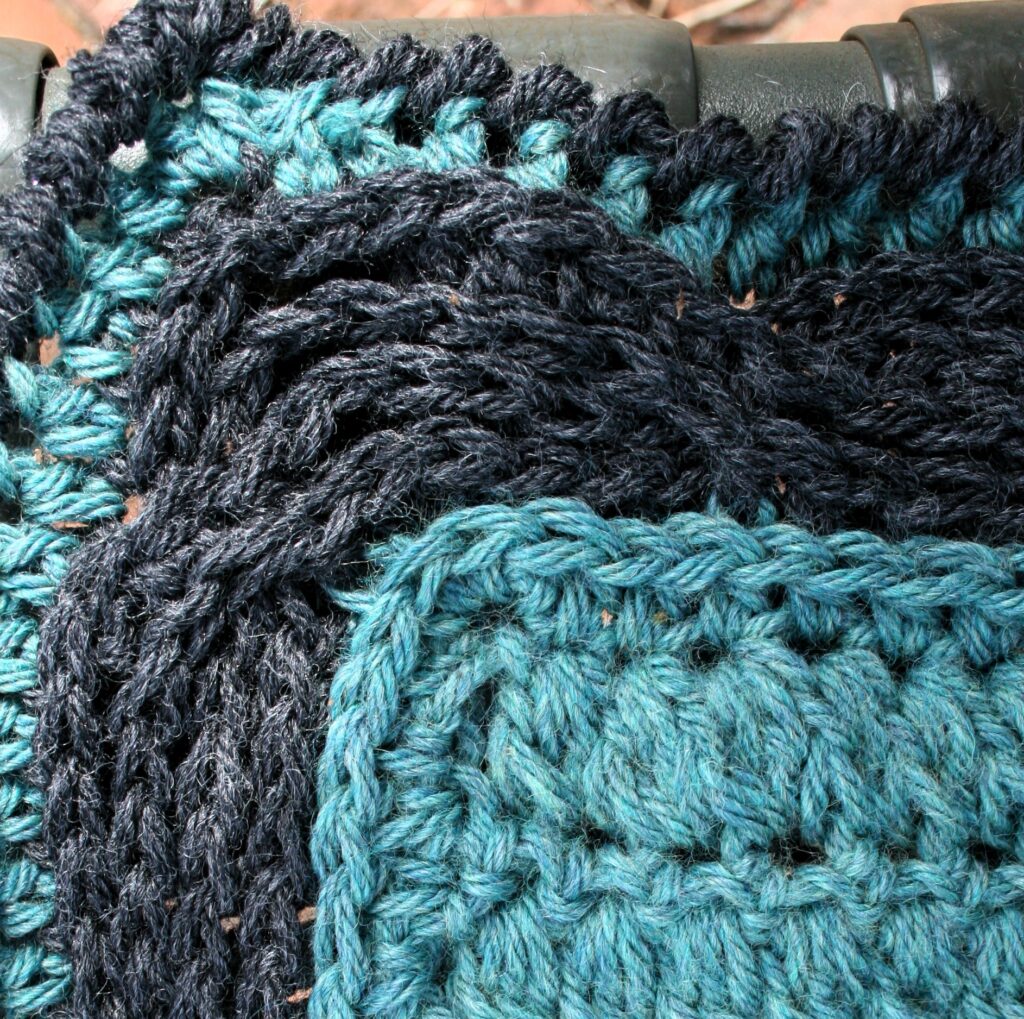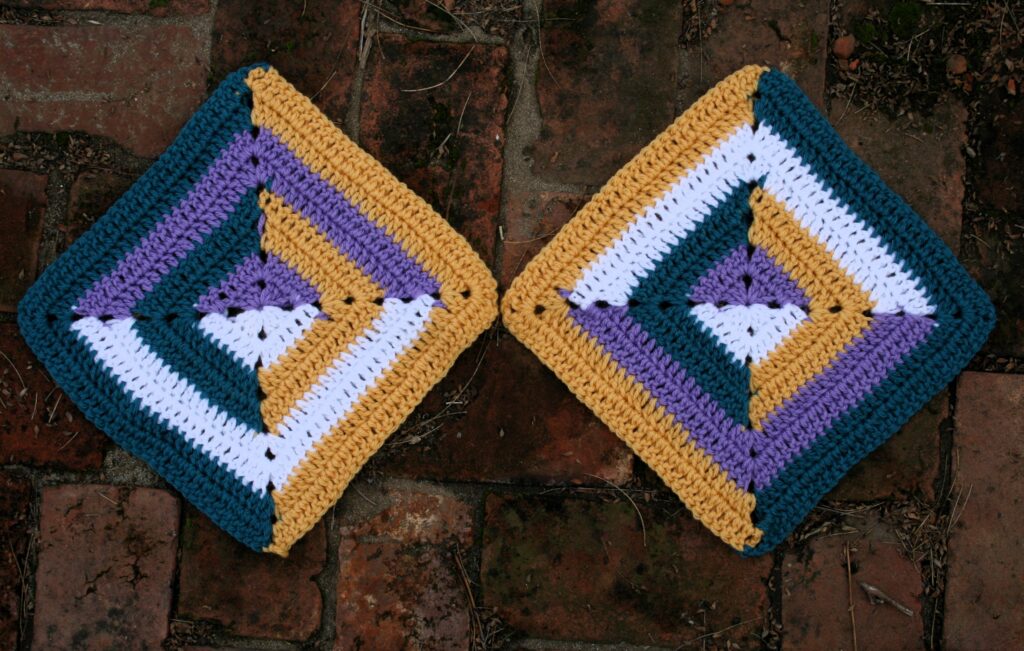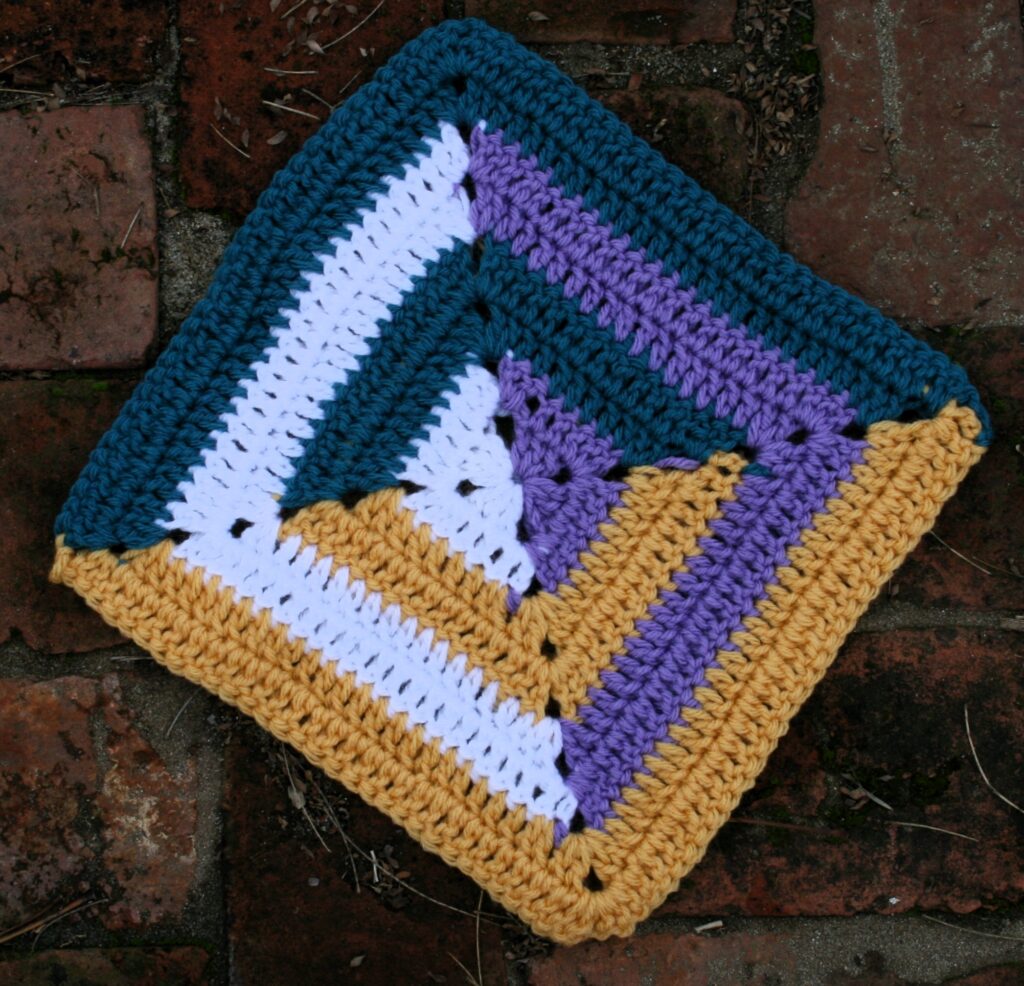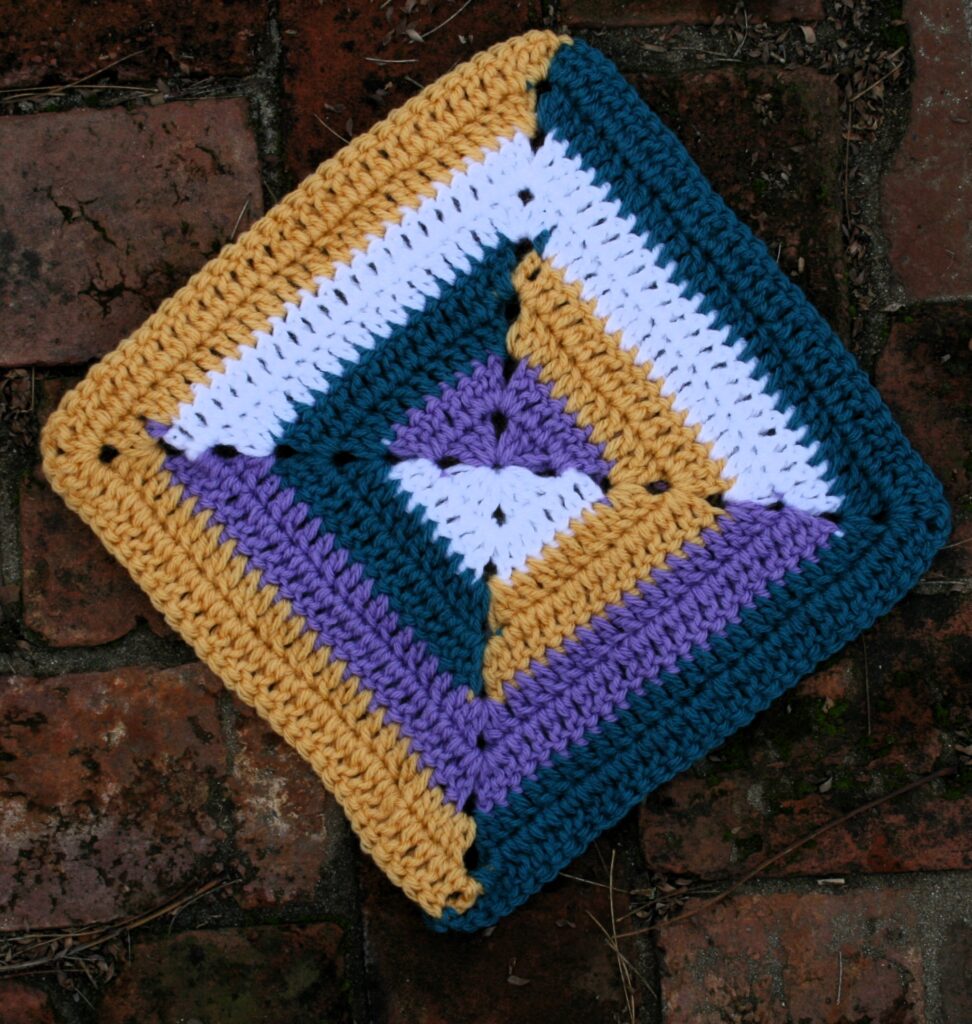Quick holiday gifts are a must, so why not give a couple of home decor items a try. The Classic Kitchen Towel is a go-to.
All you need is a kitchen hand towel, yarn, and a hook. Within the afternoon you can make up a stack and be all set for beginning your wrapping.
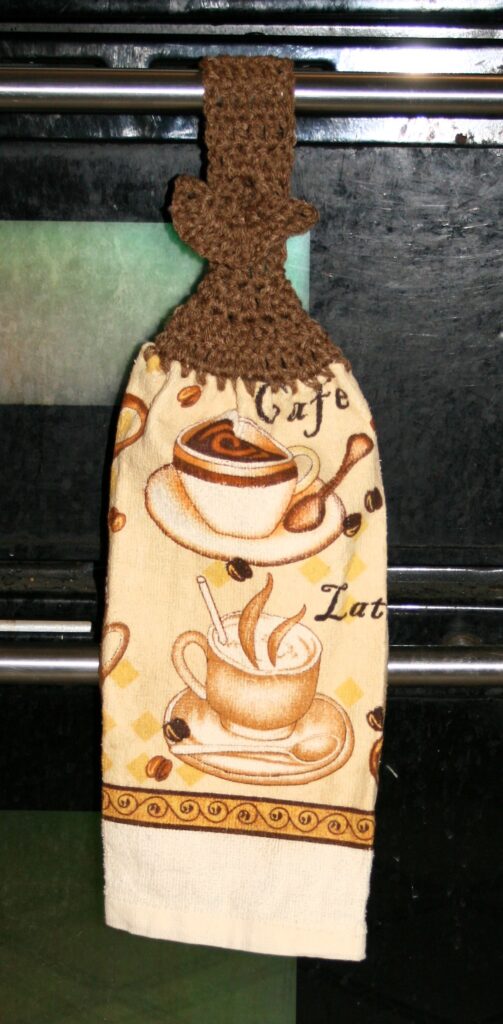
I prefer to not use an actual written pattern for this project, I think it can get in the way a bit. Instead, I take the approach of “this is the basics, lets jump in”
Lets Cut
To begin, I fold the towel in half, short edge to short edge. Then I cut it in half at the fold. I do this because I fond it easier to crochet through I piece of fabric. Having an intact towel usually means to insert your hook through the fold, and thus 2 pieces of fabric. In addition, I get two gifts out of each towel. Double bonus!
Now we stab
Then find a crochet hook that will “stab” through the fabric, about ½” (1.25 cm) from the cut edge. The weave of the towel will typically give way to the hook. In the rare occasion that it doesn’t, try a smaller hook, for you can use a hammer and nail to “punch” holes into the fabric.
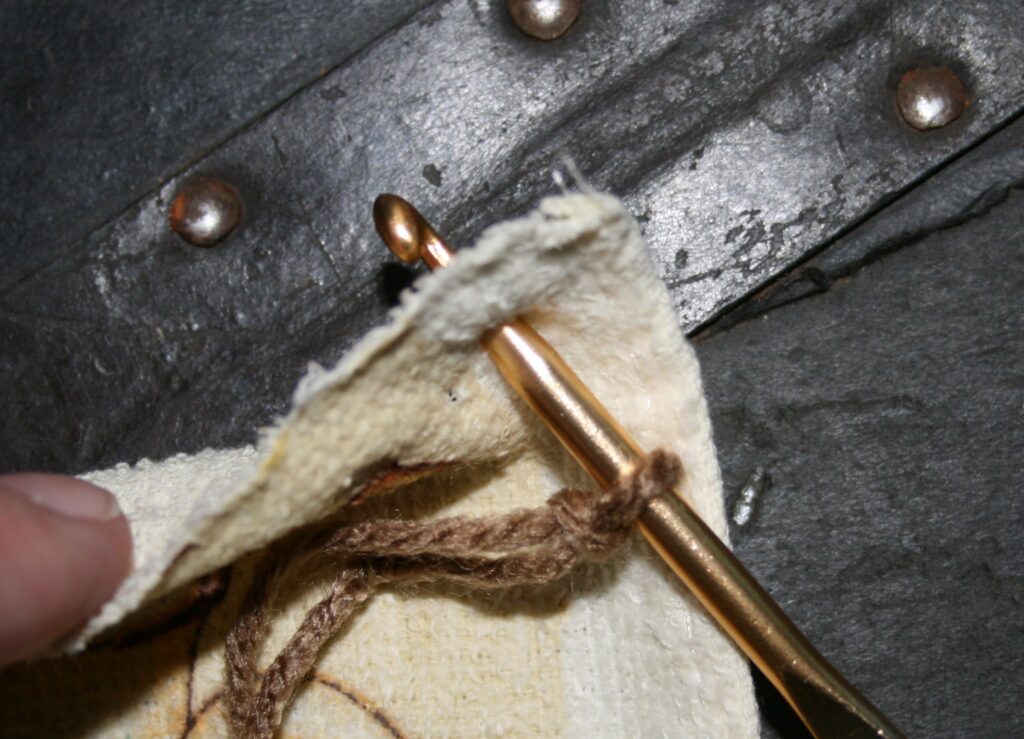
Some people like to ensure that these “stabbed” or “punched” points are evenly spaced across the top edge. I have found that I don’t usually notice it being uneven from being eye-balled, especially since the towel usually folds back on itself.
Single crochet stitches are worked in these “stabbed” or ‘punched” points, a chain can be worked between the single crochets, but that is a personal choice. After getting all the way across, chain 3 and turn.
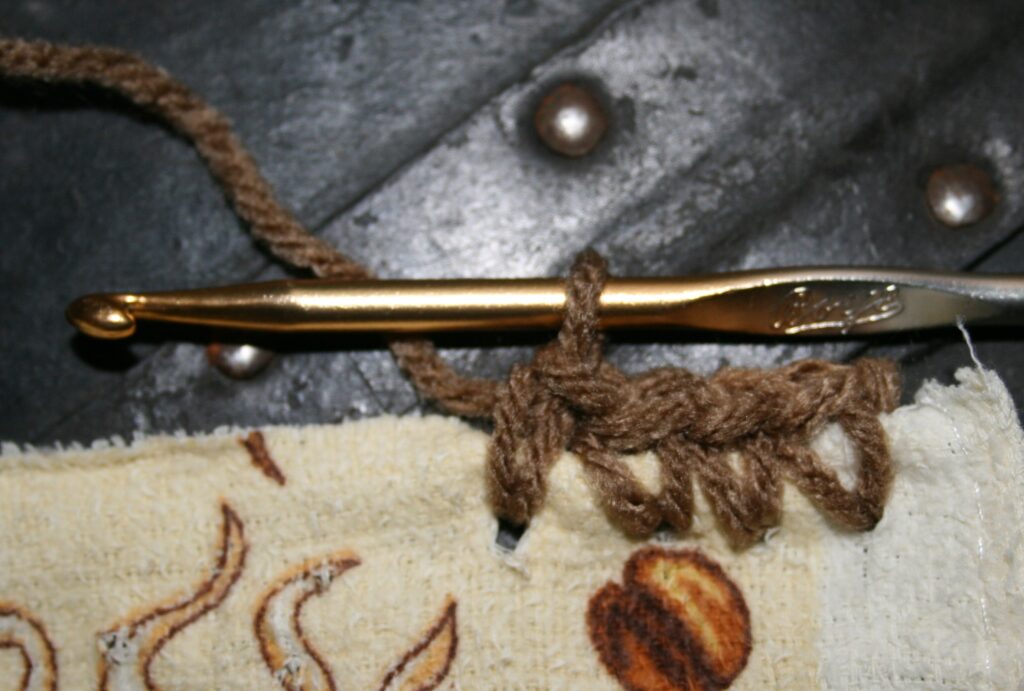
(Don’t worry about the cut edge, it will typically roll under when you begin stitching, if it doesn’t you can help it to curl under the stitches).
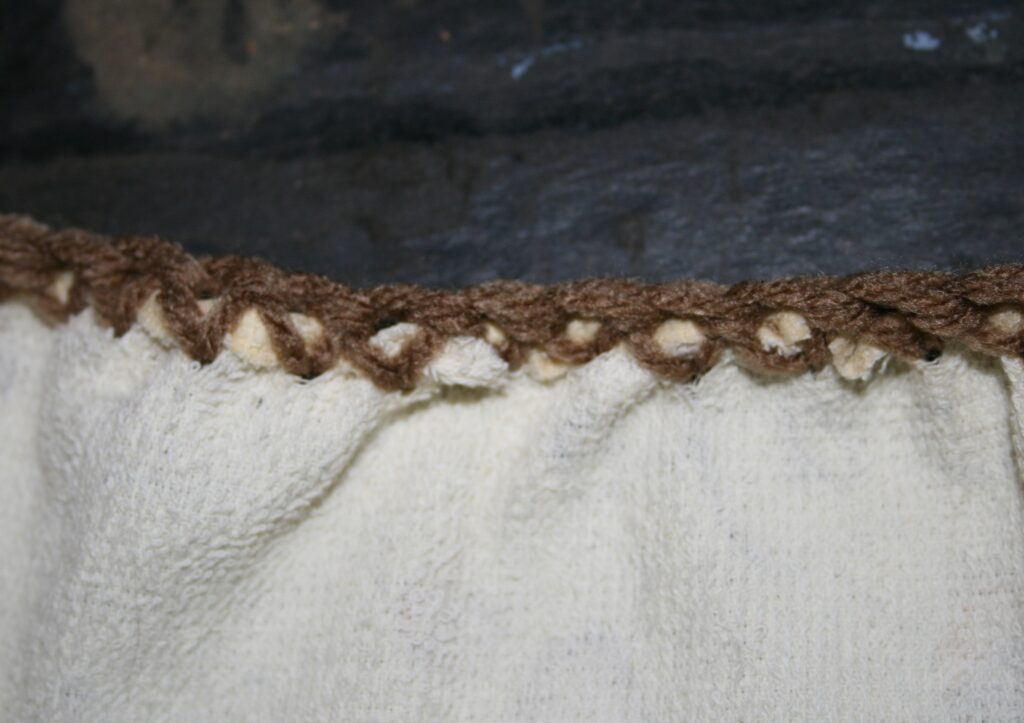
The second row is just double crochet all the way across.
Now some regular crochet
Row 3 just chain 2, double crochet in the next stitch and work a double crochet 2 together all the way across. If the stitch count doesn’t work out evenly, don’t worry just work 1 double crochet at the end. Then turn.
Repeat Row 3 until there are only between 5-9 stitches remaining. This will become the “neck” or “hanging part” of the towel.
Making the “neck” is simply working the stitches even (by working: chain 3, double crochet in each stitch across, turn). By the second row of the “neck” you want to make a “buttonhole”. This is done by making a chain space (chain 1, skip 1 stitch) in the center of the row. The next row a double crochet is worked into the chain. Continue working even until the neck is between 9-14” long.
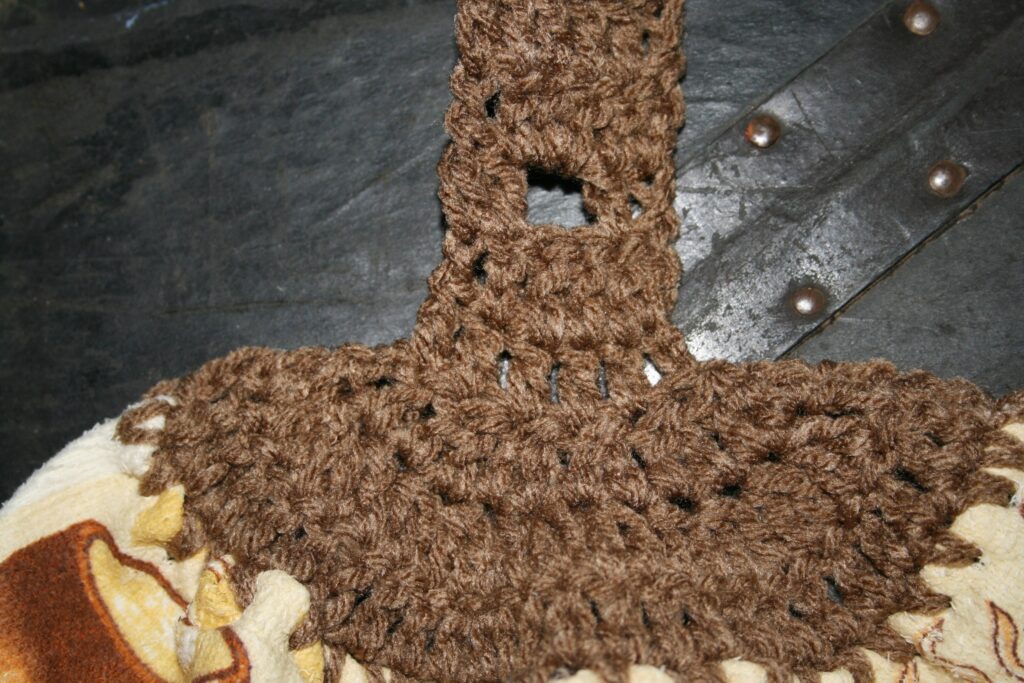
No button is actually needed. Instead, when the length of the “neck” is finished, work an additional row with 3 double crochet stitches in each stitch across. This makes a flared and sometime ruffled end that can be inserted through the “buttonhole” to secure it to any rod.
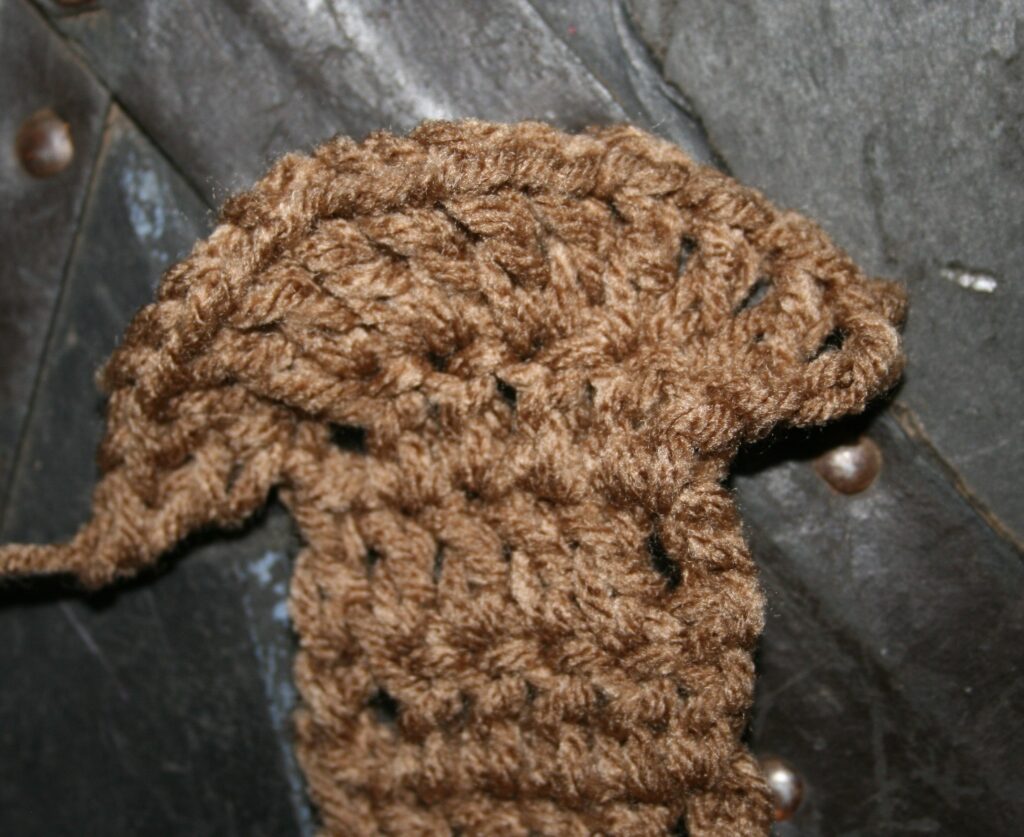
Lastly, weave in the ends, and this gift is done.
As far as yarn to use, I usually use some scraps that are usually a medium weight (#4) and usually acrylic. This just happens to be what I have on hand the most, but really anything can be used.
Another relatively quick gift is a simple pot holder; this is one that I turn to.

